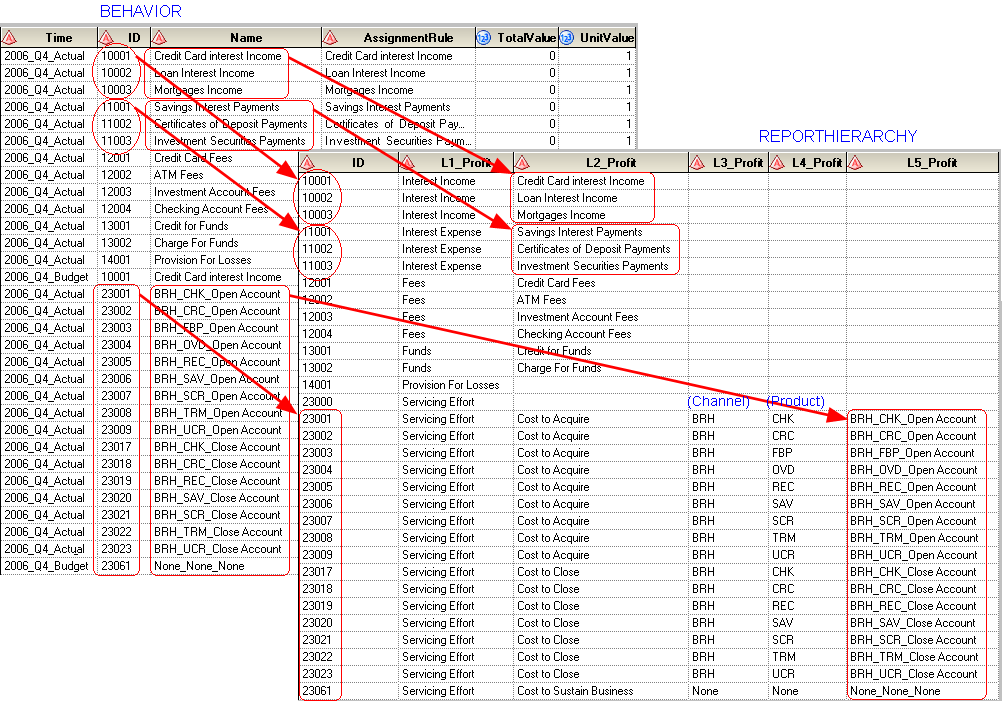
The following picture illustrates the relationship between the behavior table and report hierarchy. In it, you can see that items in the behavior table occur at the lowest level in the report hierarchy table. Because the hierarchy can have different depths at different places, this means that the behavior table items can occur in different columns (different depths) in the report hierarchy table. Also, note that intermediate levels can correspond to custom dimensions (for example, the channel and product dimensions at levels 3 and 4) but they do not have to. For example, interest income and interest expense (in the first six rows of the report hierarchy table) have no existence outside the report hierarchy table itself.

The following graphic summarizes the relationships among the behavior table, report hierarchy, report layout, and resulting OLAP report. Note that the ID in the behavior table matches the ID in the report hierarchy table and in the report layout table. The software currently also requires that the associated name in the report hierarchy table match the name in the report layout table, but the primary key is the ID field.
